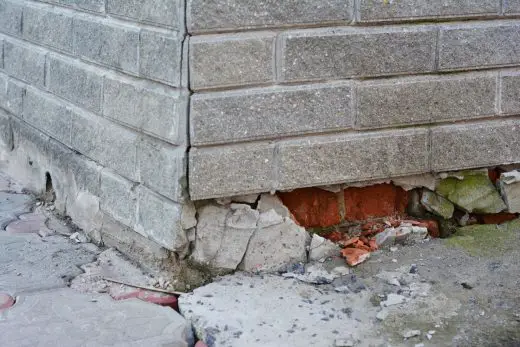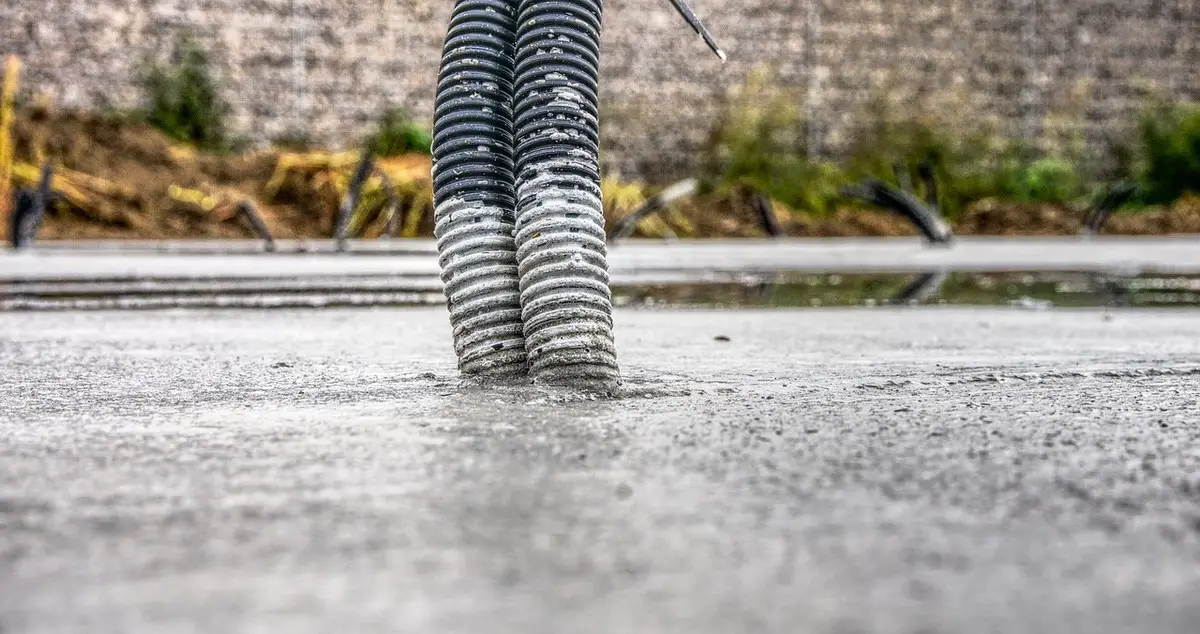What are common foundation repair methods, House floor guide, Property maintenance tips
What Are Common Foundation Repair Methods?
January 8, 2024
A foundation serves as the bedrock for the building’s structural integrity. It provides essential support to create a secure and stable living environment. However, over time, it is prone to wear and tear. Signs of foundation problems often include cracks in walls or floors, misaligned doors and windows, and uneven floors. It is generally the result of soil movement, water damage, and natural settling. So, foundation repair is an essential step to address these issues and maintain the resilience of the foundation.
Let us dive into understanding the various foundation repair methods so that you can make an informed decision for your home.
Slabjacking or Mudjacking
Slabjacking is a technique used for uneven concrete surfaces. It is effective for addressing foundation sinking or settling issues. The method involves raising the concrete surface to an even level. It creates a stable foundation and helps to restore the aesthetics of your home. The process followed in this foundation repair method is as below:
- A precise location on the concrete slab is identified for the injection of the slurry mixture.
- Then, small holes are drilled into the slab for injection.
- A slurry mixture of soil, cement, and additives is injected under pressure into these holes.
- The mixture fills voids and lifts the slab, correcting any unevenness.
- Finally, the drilled holes are sealed and painted.
Installing Piers or Pilings
This method is used when a foundation needs additional support. Piers or pilings are installed to transfer the load of the structure to stable soil. It helps to prevent further settlement or sinking. The process followed in this foundation repair method is as below:
- The soil condition is examined to determine the depth and type of piers or pilings for installation.
- Piers or pilings are strategically positioned to provide enhanced support.
- Piers or pilings are drilled into the ground until stable soil or bedrock is reached.
- Rigorous load testing is conducted to ensure effective bearing capacity.
Foundation Underpinning
Underpinning is used to strengthen the foundation. It is done to prevent further damage and improve the overall stability of the structure. The method prevents further settlement or shifting of the foundation. The process followed in this foundation repair method is as below:
- Weak points in the foundation are assessed.
- Helical piers or push piers are chosen based on the assessment’s findings.
- Soil from beneath the weak points of the foundation is excavated to create space for the installation.
- Selected underpinning elements are installed beneath the existing foundation.
Grading and Drainage Improvements
This method focuses on correcting grading and drainage issues around the foundation. It involves regrading the soil to ensure a proper slope away from the structure. The drainage systems are also installed to redirect the water. Combined, this helps to prevent soil contraction and expansion issues caused by water pooling. The process followed in this foundation repair method is as below:
- A detailed examination is conducted to understand the existing drainage patterns and soil slope.
- Areas where water is pooling, low spots where the slope is insufficient, or other problems are identified.
- Then, the soil is graded to establish a proper slope away from the foundation.
- Drainage systems are installed to prevent water accumulation around the foundation.
- In some cases, the exterior of the foundation is waterproofed to further protect against moisture intrusion.
Pier and Beam Foundation Repair
If your foundation is constructed using a pear and beam, this repair method is used to address sagging beams or deteriorating piers. The issue is known to affect the stability of the building. So, adjustments or replacements of these components are carried out to maintain the overall health of the foundation. The process followed in this foundation repair method is as below:
- A comprehensive assessment of wooden beams and concrete piers is conducted to identify areas of concern.
- Shims, made of steel or composite materials, are strategically inserted to level and balance the foundation.
- Severely damaged beams or piers are carefully removed, and new components are installed.
- The foundation’s original elevation is restored, and uniform weight distribution is ensured.
Root Barriers
Root barriers are used to protect the foundation from tree root threats. These roots seek moisture and penetrate deep into the soil; this way, they can exert pressure on the foundation, causing cracks. So, barriers are installed to prevent the encroachment of the roots. The process followed in this foundation repair method is as below:
- Trees with roots that may compromise the foundation’s integrity are identified.
- Physical or chemical barriers are installed to prevent root encroachment.
- Periodic root pruning is conducted to maintain a balanced and non-intrusive root system.
- Adaptations to the barriers are made over time to accommodate changing root dynamics.
Crawl Space Encapsulation
Crawl space foundations are vulnerable to moisture issues, which can lead to wood decay and mold growth. The encapsulation method seals the crawl space area to control humidity levels. It is used to maintain the structural integrity of the foundation. The process followed in this foundation repair method is as below:
- The cause of moisture issues in the crawl space is examined.
- Then, vapor barriers are installed in the crawlspace to prevent moisture intrusion.
- Insulation and sealing of vents can be further practiced to prevent extreme temperature and humidity levels.
- Dehumidifiers can be installed to maintain optimal humidity levels.
Waterproofing
This repair method is used to protect the foundation from water damage. It includes applying waterproof sealants to foundation walls and installing proper gutters, downspouts, and drainage systems to divert water away from the foundation. The process followed in this foundation repair method is as below:
- The foundation walls are thoroughly inspected for cracks.
- Existing cracks are sealed before waterproofing.
- Waterproof coatings or membranes are applied to foundation walls to create a protective barrier.
- Proper functioning of gutters and downspouts is ensured, and extensions are added to direct water away from the foundation.
Slope Stabilization
In areas with sloping terrain, stabilization methods are used to prevent soil erosion and sliding. It involves the construction of retaining walls, the installation of soil nails, and other measures to stabilize the soil beneath the foundation. The process followed in this foundation repair method is as below:
- A thorough geological assessment is conducted to understand soil composition.
- Then, retaining walls are erected to prevent soil movement.
- Soil nails can be installed to stabilize slopes.
- Vegetation can be strategically planted to anchor the soil and prevent erosion.
Chemical Grouting
Chemical grouting is a process used to address voids or inconsistencies in the soil. In this method, polyurethane or epoxy resins are injected into the soil. It helps to stabilize, increase load-bearing capacity, and lift the foundation. The process followed in this foundation repair method is as below:
- A detailed soil analysis is conducted to understand the composition of the soil and its characteristics.
- Then, precise points are identified, and injection tubes are strategically placed.
- Polyurethane or epoxy resins are injected under controlled pressure to fill voids and stabilize the soil.
- The injected material expands and solidifies, creating a stable foundation.
What are common foundation repair methods Conclusion
Maintaining a strong foundation is vital for the structural integrity and longevity of the building. The appropriate foundation repair method depends on the specific characteristics and nature of the issues. Consulting with professionals helps to determine the most effective and tailored solutions. Foundation repair methods not only address existing issues but also prevent future problems. By prioritizing proactive repair and maintenance, you can ensure the structural soundness of your building.
Comments on this guide to What Are Common Foundation Repair Methods? article are welcome.
Construction
Construction Posts
Identifying telltale signs of home foundation problems

Architects and Builders know about Formwork
5 reasons to use steel in residential construction
Reasons To Consider Custom Home Construction
Buildings
Residential Architecture Articles
Comments / photos for the What Are Common Foundation Repair Methods? page welcome





